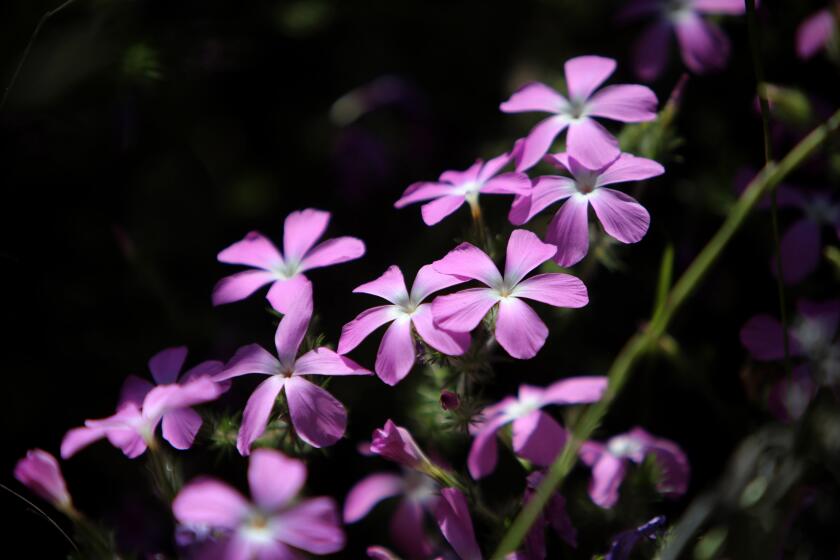Supervisor Tears Out Part of Lawn to Save Water : Drought: The number of gallons Vicky Howard had used was four times the county average.
The azaleas, roses, veronicas and philodendron that grew around Vicky Howard’s back-yard patio have been torn out, victims of Southern California’s five-year drought.
In their place is a dry, barren area that will someday be paved over to become part of the patio.
For the Ventura County supervisor from Simi Valley, what hurt most was having to kill the philodendron, which she has had for almost 20 years.
“It was like killing something we’ve had forever,” she said.
The yardwork is part of Howard’s plans to make her lush 20,000-square-foot back yard more responsive to the water shortage. Howard also hopes that it will bring down her water consumption from a level that has been four times as high as that of the average county resident.
Howard said she and her husband conserve water in the house but that a great percentage of her monthly total was used to keep her yard and trees from wilting and turning brown. With the help of her husband, James, Howard began last weekend to tear out clumps of her lawn. She plans to tear out about one-third of her yard and replace many of her plants with drought-tolerant substitutes.
A gardening enthusiast, Howard said she is troubled by the prospect of losing the yard that she has nurtured for years. “I like to garden. That is what is so heartbreaking about it,” she said.
Part of the lawn, which had been watered by an automatic sprinkler system, will be transformed into an addition to her patio. Another patio will replace about 100 square feet of lawn on the west side of the house.
The sprinklers themselves are being supplanted by a more efficient watering system, including drip irrigation for some plants.
Replacing lawns with drought-resistant plants and shrubs can cut water consumption by as much as 60%, according to a landscape contractor.
Howard said she and her husband, who is retired, are consulting with a professional landscaper on the project. However, she has not decided what to do with some rosebushes and the 22 trees in the yard.
“We are still debating about taking out a couple of trees,” she said.
Howard’s utility records for September through February showed that she and her husband consumed a daily average of 1,080 gallons of water--or 540 gallons each. The average daily water use per person in Simi Valley and in the county overall is 128 gallons, according to water officials.
The amounts represent the highest for any supervisor, according to utility records. In contrast, Supervisor John K. Flynn and his family have used about one-third the quantity of water consumed daily by the typical county residents, according to his utility records.
The project under way in Howard’s yard is being repeated throughout Southern California.
Ron Nichols, a member of a city of Ventura task force on water conservation and owner of a landscaping company in Camarillo, said more and more homeowners are asking him to recommend water-saving plants and irrigation techniques for their yards.
He said that saving water in the yard does not necessarily mean paving over grass and gardens. Since the five-year drought began, Nichols said, landscape contractors have learned innovative ways to save water and still make a yard look good.
For example, he promotes a technique called Xerascaping, which blends drought-tolerant plants, mulch, shrubbery and semi-paved areas, such as stone paths, to reduce overall water use without paving over the entire yard.
“It brings together several elements that will help conserve water,” he said.
More to Read
Start your day right
Sign up for Essential California for news, features and recommendations from the L.A. Times and beyond in your inbox six days a week.
You may occasionally receive promotional content from the Los Angeles Times.







